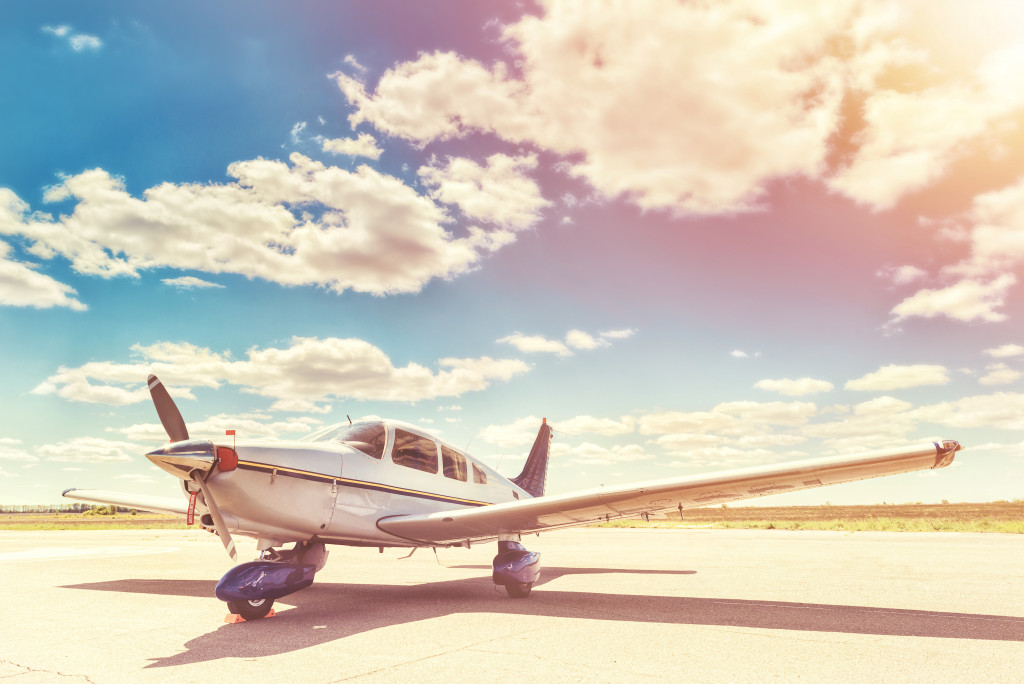Owning a private plane is a beautiful experience. You can travel to many places, and you don’t have to worry about airlines or other people. However, owning a private plane also comes with great responsibility — you are responsible for the safety of your aircraft. For your plane to stay in good condition, it must undergo basic preventive maintenance tasks regularly.
Preventive Maintenance Requirements
According to the Federal Aviation Administration (FAA), certified aviation maintenance technicians are qualified to do aircraft preventive maintenance. Suppose you own the aircraft and have a 14 CFR Part 61 pilot certificate. In that case, you are also authorized to do preventive maintenance on your aircraft. That is as long as the plane is not flown under 14 CFR Part 121, 127, 129, or 135.
You must, however, determine if you can do the job safely. Remember that your life and those of your passengers are at stake. If you believe you are capable, you must thoroughly study 14 CFR Part 43, Appendix A, Subpart C (Preventive Maintenance). This document lists the allowed preventive maintenance tasks for pilot owners. Preventive maintenance is only authorized for tasks that do not involve complex assemblies or disassembling.
You must maintain an aircraft preventive maintenance logbook. Every time you do a preventive maintenance task, you must document the following:
- a complete and detailed description of the task
- the date the job was completed
- your signature, the certification you hold, and the certificate number
Suppose a certified technician does a preventive maintenance task on your plane. In that case, an entry must also be recorded with the technician’s signature, certification, and certificate number.
General Pre-Flight Checks
You must do the following general aircraft checks before any flight:
- Display the Aircraft Registration and Certificate of Airworthiness.
- Check that aircraft records document the aircraft’s compliance with all Airworthiness Directives (ADs).
- Note when a directive’s recurring action is scheduled next.
- Check that aircraft records document that all tests required by the FAA on the VOR, static system, and transponder have been satisfactorily performed.
- Check that the FAA-approved Pilot’s Operating Handbook or Flight Manual is aboard and updated to any current changes, with correctly installed placards.
- If flying internationally, check if an FCC radio station license is required.
In addition to these, you must also do thorough checks on the plane’s various components, such as the following:
- engine
- propeller
- wings
- control surfaces
- lighting system
- tires
- brakes
- landing gear
- instrumentation
- fuselage and empennage
- cabin
Some Allowed Preventive Maintenance Tasks
These are some examples of the preventive maintenance tasks that certified pilot-owners are authorized to do.
• Remove and replace cowling that does not require disconnecting flight controls or removing the propeller
• Lubricate fairings, cowling, cover plates, and other items that do not require disassembling
• Refill the hydraulic reservoir with hydraulic fluid using mineral oil-based 83282 or 5606 aircraft hydraulic fluid, synthetic hydrocarbon-based fluids, or phosphate ester-based fluids, as needed
• Replace hose connections but not including hydraulic connections
• Apply allowed protective or preservative coating to components that do not require disassembling of any operating system or primary structure
• Add oil, water, or do other services on landing gear shock struts
• Clean, grease, or do other services on landing gear wheel bearings
• Repair or remove and install landing gear tires
• Clean or replace spark plugs and set gap clearance
• Service or replace batteries
• Replace lenses of landing and position lights, bulbs, and reflectors
• Replace cotter keys and safety wire
• Replace safety belts
• Patch fabrics that do not require rib stitching or removing control surfaces or structural parts
Functional Check Flight
After you finish the preventive maintenance task, you must perform a functional check to determine if the aircraft is airworthy. This flight should comply with the approved Pilot’s Operating Handbook or Flight Manual. The checks should be made in the same order as specified in the POH/FM . For example, if you replaced a landing light, you would check that it works during takeoff and landing. You would also check its general operation at other times during the flight. If everything seems to be working fine, then you can log the preventive maintenance in your aircraft records.
Keep Your Plane Well-Maintained
These are just some basic maintenance tasks you need to perform on your plane. If you are not sure how to do these checks, you should take your plane to a certified mechanic. It is important to keep up with the maintenance of your private aircraft because it is your responsibility to make sure that it is safe to fly. By following these tips, you can ensure that your plane is in good condition and ready for any flight. You can enjoy it for many years to come.



